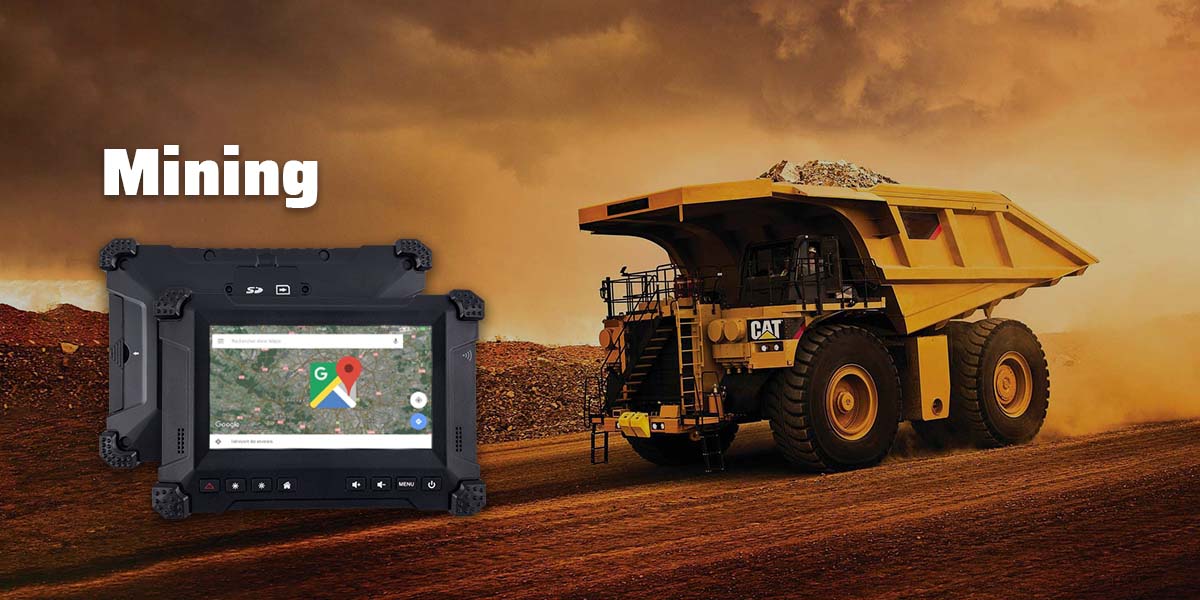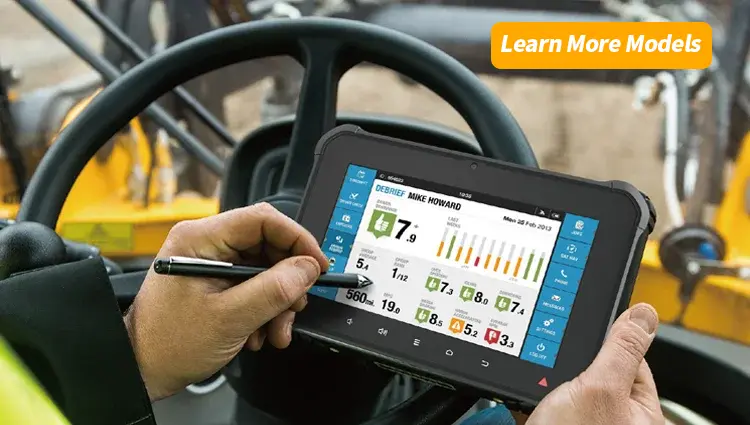7 Costly Pitfalls a Mining Telematics Terminal Prevents in 90 Days—Can Your Haul Road Afford to Wait?
Dust-covered dashboards, idling trucks, and a dispatcher yelling into a crackling radio—those images still dominate too many mine sites. Yet beneath the grit, a quiet data revolution is unfolding. A palm-sized mining telematics terminal now streams location, payload, tire pressure, and fuel burn in real time, turning 100-ton monsters into predictable, schedulable assets. Ignore the feed, and you hemorrhage cash on fuel, tires, and unplanned downtime. Harness it, and you add six-figure margin without adding a single truck. This blog answers the questions operations managers, mine engineers, and fleet buyers keep asking—then shows exactly how to convert raw CAN-bus data into boardroom-level ROI.

1. What Exactly Is a Mining Telematics Terminal?
Picture an industrial computer, 4G/5G router, and 50-channel GPS receiver fused into one IP-67 box. It wires directly into the vehicle’s CAN bus, taps sensor power, and beams encrypted packets to a cloud dashboard. Unlike consumer trackers, the unit survives –40 °C to +85 °C, 8G continuous vibration, and high-pressure wash-down. Translation: it lives where your trucks live.
2. How Is It Different from “Regular” Fleet Telematics?
Road-going fleets care about traffic fines and delivery windows. Mining fleets care about payload accuracy to ±1 %, reverse-distance tally for shovel productivity, and engine hours that accrue while stationary. Mining terminals therefore log 300+ engine parameters, integrate with truck scales, and support edge algorithms that flag engine-overload events before the OEM’s own ECM notices.
3. ROI: Hard Numbers from Real Pits
- Fuel: A 5 % reduction on a 200-truck fleet burning 300 l/day saves 3,000 l daily. At $1.10/l, that is $1.2 M per year.
- Tires: Under-inflation slashes tire life 15 %. With $45,000 giant haul-truck tires, catching pressure drift on 30 % of the fleet already funds the entire telematics rollout.
- Maintenance: Codelco’s El Teniente division reported a 12 % drop in unplanned maintenance hours within six months of terminal installation—worth $2.4 M in recovered production (source: internal 2022 audit).
4. Top 7 Pitfalls a Terminal Eliminates in One Quarter
- Ghost shifts—ID cards say the truck moved; GPS proves it didn’t.
- Engine-overload abuse—Real-time torque curves trigger operator coaching alerts.
- Shovel queue gaming—Automatic queue timers expose “favorite-truck” bias.
- Fuel skimming—Sudden 40-l drop in tank level while parked triggers theft alert.
- Overload fines—On-board weigh scale integration rejects 12 % illegal payloads before gate exit.
- Missed PM windows—Engine-hour meter tied to OEM schedule; no truck slips to 260 h without oil change.
- Speeding on haul roads—Geofence plus speed histogram cut 58 % of >40 km/h events in trial site.
5. Will It Integrate with My Dispatch or FMS?
Modern terminals speak JSON over MQTT. Vendors like Wenco, MineStar, and Modular have REST endpoints ready. Budget one week for API mapping and another for field validation; after that, dispatchers see the same KPIs whether they sit in the office or in a light vehicle.
6. Network Dead Zones: What Happens When Trucks Vanish?
Terminals buffer 30 days of second-by-second data on a 32 GB eMMC card. Once the antenna pings a tower, everything back-fills automatically. In practice, 4 minutes of signal per shift is enough to stay current.
7. Cybersecurity—Are We Exposing Production Data?
Look for ISO 27001-certified suppliers and AES-256 cipher with TLS 1.3 handshake. Insist on private APN and certificate-based device authentication; 82 % of mining hacks start with stolen VPN credentials, not the telematics hardware itself.
8. Installation Without Killing Uptime
Magnetic-mount antennas and Deutsch-connector harnesses let a two-person crew retrofit one truck during a 45-minute lunch break. Schedule installs at planned maintenance days and you add zero downtime.
9. Choosing the Right Spec Sheet—Non-Negotiables
- 9–90 V DC input range (cranking transients on cold mornings hit 70 V).
- Dual CAN ports—one for engine, one for aftermarket scales or drills.
- 4G LTE Cat 12 fallback to 3G; 5G ready.
- –40 °C cold-start; conformal-coated PCB.
- Built-in 3-axis accelerometer for road-quality analytics.
- On-device cache plus super-capacitor to survive power cuts during cable faults.
10. Vendor Red Flags That Suggest “Walk Away”
- Proprietary desktop software—cloud or bust.
- $5/unit monthly fee but $750 activation charge buried in fine print.
- No SLA on data latency—means they batch-upload every 15 min.
- Locked SIM slot—your data, their carrier, forever.
- One-year warranty on a product that depreciates over five.
11. Story from Site: The $600,000 Blunder That Didn’t Happen
A copper mine in Peru’s Andes installed terminals across 90 haulers. Two weeks later, the dashboard flagged Engine #7 running 9 °C above median coolant temp during the night shift. Maintenance pulled the truck, stripped the pan, and found a cracked liner. Early catch saved a $280,000 in-frame rebuild plus three days of lost production—another $320,000. Terminal rollout paid for itself before the invoice landed.

12. Step-by-Step Rollout Blueprint
Week 1: Pick 5 pilot trucks closest to workshop. Capture baseline KPIs: fuel, idle, speed, payload variance.
Week 2: Train mechanics on alert workflow; create WhatsApp group for instant triage.
Week 3: Expand to 25 % of fleet; integrate fuel-tank sensor.
Week 4: Present 21-day delta to GM—target 3 % fuel cut, 10 % idle reduction.
Week 5–8: Full fleet, add driver-behavior scorecard; publish weekly league table.
Week 9–12: Layer predictive maintenance algorithms; schedule first ROI review.
Quarter close: CFO signs off capital; procurement negotiates enterprise license.
13. Hidden Benefits Nobody Puts in the Brochure
- Insurance premium rebate—one insurer cuts 8 % if terminal data is shared.
- Carbon credits—Verified 5 % CO₂ drop can sell at $40/t in some jurisdictions.
- Operator pride—Scoreboards gamify safety; incident rates drop 14 %.
- Night-shift visibility—Safety dept. sees every truck in real time, no chase cars needed.
14. Common Objections Smashed
“Our haul road is too rough—electronics fail.”
ATEX-certified units have run 60,000 h in Siberian coal pits with 1.2 % annual failure rate—half that of the trucks themselves.
“Drivers will sabotage the antenna.”
Tamper alerts trigger the moment RSSI drops while engine runs. One written warning usually ends the problem.
“We already have OEM telematics.”
Factory portals show warranty parameters; third-party terminals show everything else—combine both for the full picture.
15. Future-Proofing: From 4G to 5G and Autonomous Haulage
Autonomous trucks need centimeter-level accuracy. Terminals with GNSS-RTK today will host positioning correction services tomorrow, avoiding a forklift upgrade when your mine goes driverless.
Conclusion
A mining telematics terminal is no longer a fancy map—it is the shortest path to margin when ore grades dip and diesel hovers at $1.30/l. Data captured today funds tomorrow’s shaft sinking, exploration, or dividend. The only question left: do you want the pit to speak to you in real time, or will you let another quarter of waste, theft, and downtime slide? Open the box, clamp the harness, and let the trucks start paying their own bills—90 days is all it takes to prove the value underground and in the boardroom.








